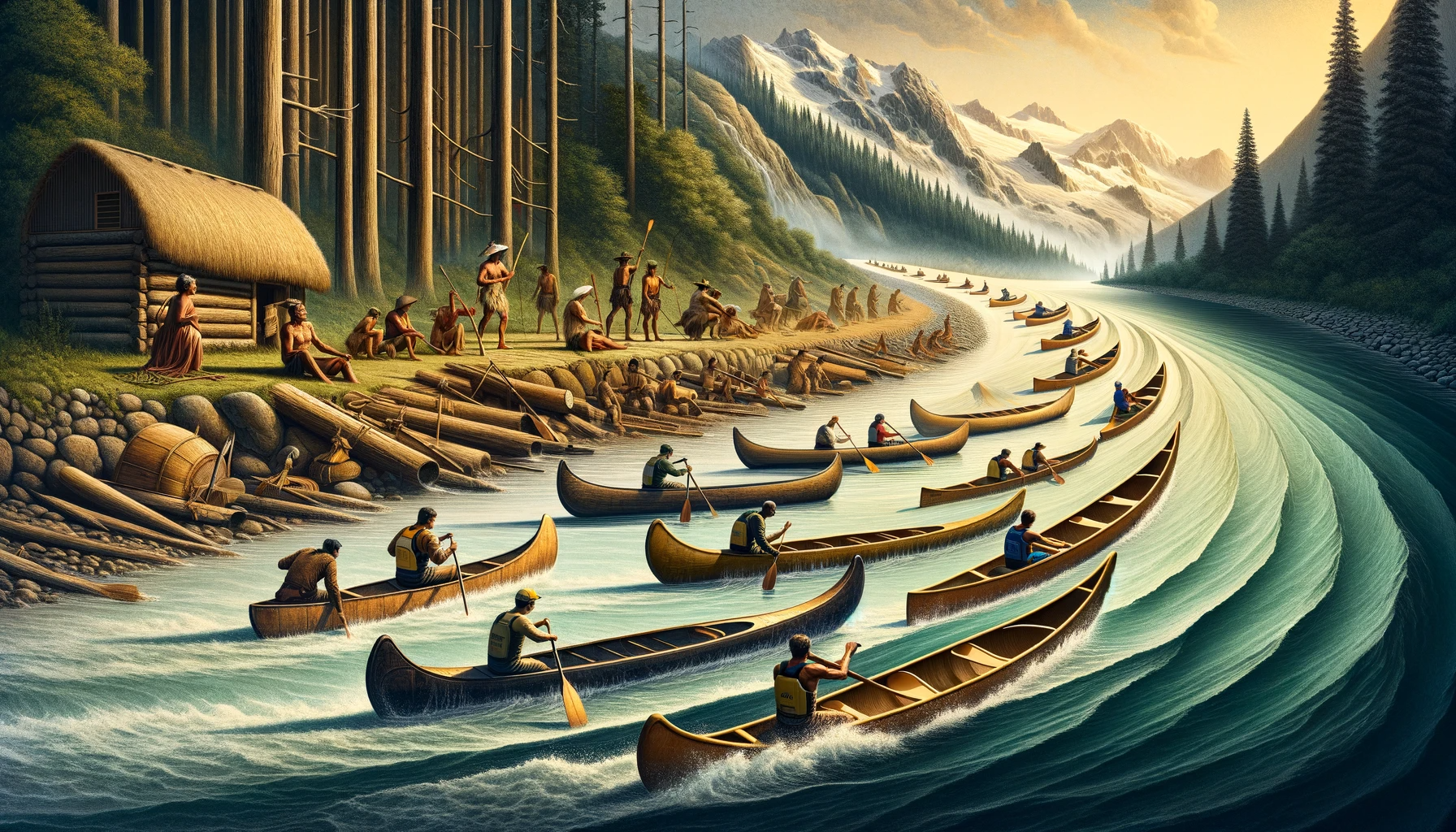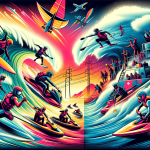The evolution of canoeing, a practice deeply intertwined with human history, reflects the ingenuity and adaptability of civilizations across the globe. From simple log vessels to sophisticated modern canoes, the journey of canoeing is not just about technological advancements but also about cultural significance and the human relationship with waterways. This article delves into the historical progression of canoeing techniques, illustrating how this ancient form of transportation has transformed into a diverse and beloved sport.
The Origins and Cultural Significance of Canoes
The canoe’s genesis traces back to the Stone Age, with its rudimentary yet efficient design marking a significant leap in human mobility and interaction with water bodies. Various cultures, including Native Americans, Polynesians, and Vikings, independently conceptualised canoes, tailoring their designs to specific needs ranging from transportation and trade to warfare.
These early canoes were crafted from natural materials like logs, bark, and animal skins, showcasing the resourcefulness and craftsmanship of ancient peoples. The design varied significantly based on geographical and cultural contexts, from open-topped bark canoes to dug-out trees and large war canoes.
The canoe’s historical journey is not just a tale of technological innovation but also a narrative of human adaptation and cultural expression. Its widespread use across diverse civilizations underscores its fundamental role in shaping human interaction with waterways and facilitating the growth of societies.
The Evolution of Canoe Construction and Materials
Initially, canoes were fashioned from organic materials like wood and bark, which provided a balance of strength, buoyancy, and manoeuvrability. The ingenuity of early humans is evident in their ability to utilise readily available resources to create functional watercraft.
As technology progressed, modern materials like fibreglass, Kevlar, and carbon fibre revolutionised canoe construction, enhancing their performance and longevity. Despite these advancements, traditional canoes made from natural materials have maintained their allure, preserving the legacy of ancient designs.
The Transformation of Canoeing from Utility to Sport
The 19th century marked a significant shift in canoeing, with figures like John Macgregor popularising it as a recreational activity. Canoe clubs and associations formed, fostering a community around this sport. This era set the stage for canoeing’s inclusion in the Olympic Games in 1936, further cementing its status as a competitive sport.
Canoeing today encompasses a range of activities, from racing and whitewater rafting to touring and camping. Its versatility and the unique connection it offers with nature continue to attract enthusiasts worldwide.
Iconic Canoe Expeditions in History
Certain expeditions stand out for their historical significance and the sheer audacity of the adventurers. This section recounts some of the most iconic canoe journeys, underscoring the spirit of exploration that has always been at the heart of canoeing.
| Expedition | Year | Adventurer(s) | Significance |
| MacGregor’s European Tours | 1860s | John MacGregor | Pioneered recreational canoeing, inspired modern kayaking |
| Across North America | 1980-1983 | Verlen Kruger & Steve Landick | Longest canoe trip ever, over 28,000 miles, showcasing endurance |
| First Amazon Descent | 1984-1985 | Piotr Chmielinski & Joe Kane | First complete descent of the Amazon River |
| The Mississippi River | 1930 | Eric Sevareid & Walter Port | Early example of adventure journalism, inspired countless expeditions |
These expeditions are more than just remarkable feats of endurance and navigation; they are emblematic of the human thirst for exploration and the enduring allure of the natural world.
Notable Techniques and Styles in Canoeing
The art of canoeing encompasses various paddling techniques, each developed for specific conditions and purposes.
The diversity of canoeing techniques reflects the sport’s adaptability to different environments. Key strokes include:
- Forward Stroke: The most commonly used stroke, essential for propelling the canoe forward.
- Reverse Stroke: Used for moving backwards or stopping.
- J-Stroke: A versatile stroke for maintaining direction and correcting drift.
- Goon Stroke: A beginner-friendly stroke, effective for maintaining a straight course.
- Pitch Stroke: Ideal for travelling straight at a good speed, correcting yaw efficiently.
- Indian Stroke: Useful against strong winds or rapids, allowing continuous paddling without removing the blade from the water.
- Pry and Push-Away Strokes: Used for directional control, differing in the application of force against the water.
- Draw Stroke: A versatile stroke for manoeuvring the canoe sideways.
Different techniques also evolved to optimise endurance and power, such as locking the elbow on the paddling side or bending the elbow to enhance stroke efficiency. “Stay on one side” and “switch sides often” are two fundamental paddling methods, each with its strategic applications based on conditions like wind and current.
Overall, the historical evolution of canoeing, from a fundamental survival tool to a multifaceted sport, mirrors humanity’s journey of innovation and adaptation. Canoes, once simple vessels for basic transportation, have evolved into sophisticated designs for recreation and competition. The development of canoeing techniques, from primitive strokes to advanced manoeuvres, illustrates the sport’s deep connection with human culture and ingenuity. Canoeing’s journey through history is a testament to the enduring human spirit of exploration and the desire to connect with the natural world in ever-changing ways.


